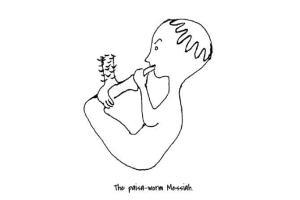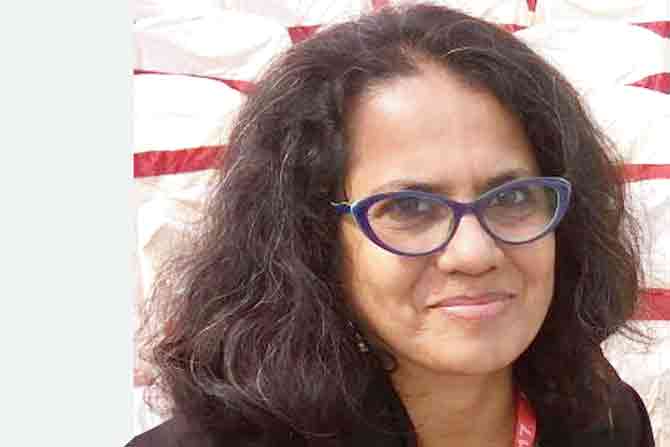In her first title of literary nonsense for older readers, bestselling writer Anushka Ravishankar dabbles in mathematics, monarchy, and other subjects to rack ones brains

Ravishankar's illustration of the Messiah
OGD is a kingdom. But it's also not, for it has no inside or outside. All the roads that lead to it, also lead you outside it. Here, a messiah is born with her foot in her mouth, which means that as her toenails grow, she'd have to eat them — thus, causing an infinite loop. If anything you read so far didn't make any sense, welcome to literary nonsense, a genre bestselling children's writer Anushka Ravishankar has explored for older readers in her latest title Ogd (Duckbill).There's no right way to read it, she tells us about the story that hops across math, monarchy, poetry and more. Edited excerpts from the interview.
ADVERTISEMENT
What prompted you to look at a new demographic?
Actually the horse came before the cart. I wrote Ogd — I didn't even start writing it as a book, I just wrote it — and when Duckbill decided to publish it, we figured that it was not for my usual readership — which is four to 11, mostly. It's definitely for older readers, but older readers with a predilection for nonsense! So I didn't choose the demographic, the book determined it.
How did Ogd come to be, and why call it that?
That's a long and funny story. I wrote this more than 30 years ago, actually. In the days of typewriters! A friend left his Brother typewriter at my house and said I could use it if I would dedicate whatever I wrote to him. What I wrote was a short story about a messiah who was born with her foot in her mouth. Later, I expanded the story and fattened it up into what became this book. I had been reading about infinite loops in a book by Douglas Hofstader, so those figure prominently in the book, as an idea, as mathematical objects, and as a kind of nonsensical philosophy. While growing up, I also read a lot of Lewis Carroll, and have always loved his way of subverting language and logic to make nonsense out of the most serious subjects. So Ogd was the result of all that. The book still has the original dedication to my friend.
Why Ogd? I made a random choice. Sometimes a title just fits. Once I thought of Ogd, I couldn't think of any other name for the kingdom or the book.
Science and literature are often seen as separate domains. In India, you have to choose science or arts in college, for instance. Is it in the nature of literary nonsense to merge the two?
Not necessarily. There are different kinds of literary nonsense. It was looked at as a genre in the 19th century when Lewis Caroll and Edward Lear were writing. Lear was an artist and his nonsense was visual. Whereas Caroll was a mathematician so his was logical, which I tend to favour. Mathematics follows a very rigid logic. Nonsense takes that and uses language to subvert it. So, yes, in that way the genre is very connected to science.

At a time when it's easy to say nothing makes sense, what is the place of literary nonsense?
At any time, the place of literary nonsense is wherever people want to play with ideas, language and logic. When we talk of literary nonsense it's not in the normal understanding of an absence of sense. It's really a balance of meaning and not-meaning, dancing on the borderline between sense and no-sense. And I use the word dancing deliberately because the main element of nonsense is playfulness.
Keep scrolling to read more news
Catch up on all the latest Mumbai news, crime news, current affairs, and a complete guide from food to things to do and events across Mumbai. Also download the new mid-day Android and iOS apps to get latest updates.
Mid-Day is now on Telegram. Click here to join our channel (@middayinfomedialtd) and stay updated with the latest news
 Subscribe today by clicking the link and stay updated with the latest news!" Click here!
Subscribe today by clicking the link and stay updated with the latest news!" Click here!







